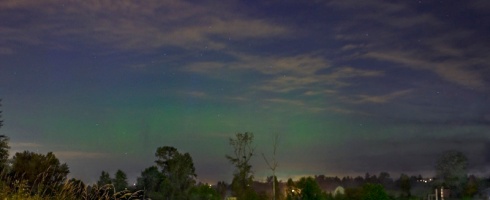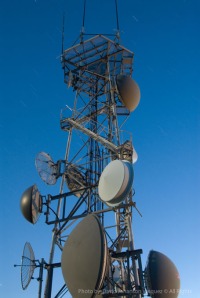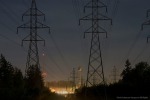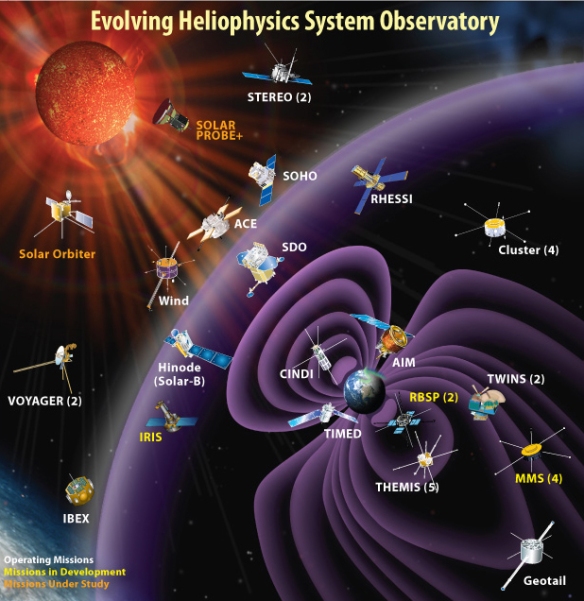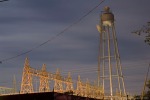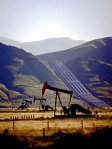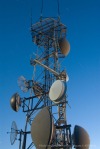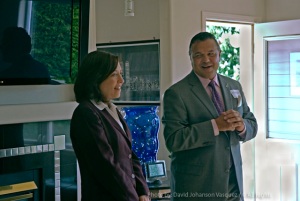Science Tech Tablet provides periodic updates on solar activity, the essay begins after the Space Weather Prediction Center Report
Prepared jointly by the U.S. Dept. of Commerce, NOAA,
Space Weather Prediction Center and the U.S. Air Force.
Updated 2013 Jul 19 2200 UTC
Joint USAF/NOAA Solar Geophysical Activity Report and Forecast
SDF Number 200 Issued at 2200Z on 19 Jul 2013
IA. Analysis of Solar Active Regions and Activity from 18/2100Z to
19/2100Z: Solar activity has been at very low levels for the past 24
hours. There are currently 7 numbered sunspot regions on the disk.
IB. Solar Activity Forecast: Solar activity is likely to be low with a
slight chance for an M-class flare on days one, two, and three (20 Jul,
21 Jul, 22 Jul).
IIA. Geophysical Activity Summary 18/2100Z to 19/2100Z: The geomagnetic
field has been at quiet to unsettled levels for the past 24 hours. Solar
wind speed, as measured by the ACE spacecraft, reached a peak speed of
674 km/s at 19/1650Z. Total IMF reached 12 nT at 18/2100Z. The maximum
southward component of Bz reached -9 nT at 19/0122Z. Electrons greater
than 2 MeV at geosynchronous orbit reached a peak level of 2710 pfu.
IIB. Geophysical Activity Forecast: The geomagnetic field is expected
to be at unsettled to minor storm levels on day one (20 Jul), unsettled
to active levels on day two (21 Jul) and quiet to unsettled levels on
day three (22 Jul).
III. Event probabilities 20 Jul-22 Jul
Class M 15/15/15
Class X 01/01/01
Proton 01/01/01
PCAF green
IV. Penticton 10.7 cm Flux
Observed 19 Jul 114
Predicted 20 Jul-22 Jul 115/115/115
90 Day Mean 19 Jul 121
V. Geomagnetic A Indices
Observed Afr/Ap 18 Jul 016/015
Estimated Afr/Ap 19 Jul 011/014
Predicted Afr/Ap 20 Jul-22 Jul 014/020-011/015-008/010
VI. Geomagnetic Activity Probabilities 20 Jul-22 Jul
A. Middle Latitudes
Active 35/30/25
Minor Storm 20/10/05
Major-severe storm 05/01/01
B. High Latitudes
Active 10/15/15
Minor Storm 25/30/30
Major-severe storm 50/40/30
A multimedia eLearning essay by: David Johanson Vasquez © All Rights — First Addition
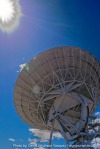 Please note: This essay is a follow-up from my chronicle on solar storm effects of the 1859 Carrington Event on an industrial era society— forward to the postmodern, microelectronic world of today. To better understand the context of this article, it’s suggested you view my introduction solar storm essay found by selecting the March 2012 archives found on left side of this page. The National Academy of Sciences (NAS) (funded by the U.S. Congress) produced a landmark report in 2008 entitled “Severe Space Weather Events— Societal Impacts.” It reported how people of the 21st-century depend on advance-technology systems for daily living, The National Academy of Science stated— Electric power grids, GPS navigation, air travel, financial services and emergency radio communications can all be knocked out by intense solar activity. A century-class solar storm, the Academy warned, could cause twenty times more economic damage than Hurricane Katrina. [1] Some leading solar researchers believe we are now due for a century-class storm.
Please note: This essay is a follow-up from my chronicle on solar storm effects of the 1859 Carrington Event on an industrial era society— forward to the postmodern, microelectronic world of today. To better understand the context of this article, it’s suggested you view my introduction solar storm essay found by selecting the March 2012 archives found on left side of this page. The National Academy of Sciences (NAS) (funded by the U.S. Congress) produced a landmark report in 2008 entitled “Severe Space Weather Events— Societal Impacts.” It reported how people of the 21st-century depend on advance-technology systems for daily living, The National Academy of Science stated— Electric power grids, GPS navigation, air travel, financial services and emergency radio communications can all be knocked out by intense solar activity. A century-class solar storm, the Academy warned, could cause twenty times more economic damage than Hurricane Katrina. [1] Some leading solar researchers believe we are now due for a century-class storm.
You’re encouraged to help make the essay interactive by entering comments or observations in the dialogue box at the end of the essay.
The essay is a work in progress, please check back as more content will be added
in the coming days. — To see this essay in another format, please visit the site: http://www.BigPictureOne.wordpress.com
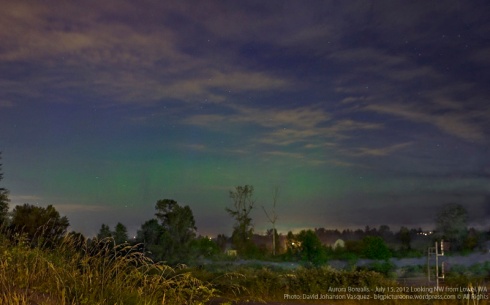
- July 15, 2012 aurora borealis sighting near Everett, WA. This event was caused from an X-class solar storm, which occurred within a week of another X-class storm (X-class being the most severe classification). The 11-year solar cycle is approaching a solar maximum around 2013, this will most likely bring more intense solar storm activity.
.
Depending on your interpretation of the essay’s title, there is nothing new under the sun when it comes to our neighboring star’s behavior. Since our Sun left its infancy as a protostar over 4 billion years ago, by triggering a nuclear fusion reaction and entering a main-sequence stage, its solar mechanics have maintained relative consistent patterns. What has not remained the same is the evolution of life on Earth, in particular, our species’ development of a civilization which now is dependent on a form of energy called electricity. Our Sun is now playing a version of solar roulette with the World’s social and economic future.
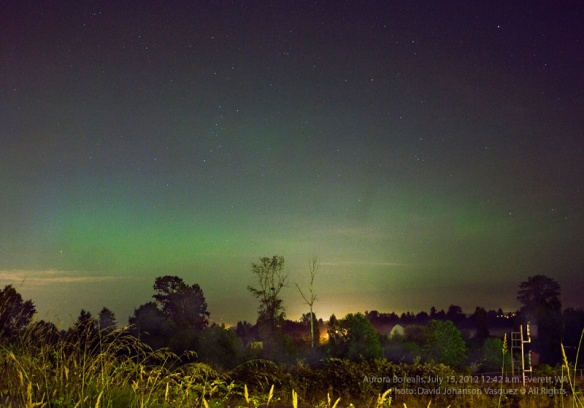
- The name “aurora borealis” was given by Galileo Galilei, in 1619 A.D., inspired from the Roman goddess of dawn, Aurora, and Boreas from the Greek name for north wind. First record siting was in 2600 B.C. in China. Collision between oxygen particles in Earth’s atmosphere with charged (ionized) particles released from the sun creates green and yellow luminous colors beginning at altitudes of 50 miles (80 kilometers). Blue or purplish-red is produced from nitrogen particles. The solar particles are attracted by the Earth’s northern and southern magnetic poles with curtains of light stretching east to west.
.
Reaching back only a few generations into the 20th Century, electricity was considered a luxury—today ordinary life would be impossible without it! And that’s where our beloved Sun comes into the picture, to potentially cast a shadow on our dependency of electricity. Solar storms have been a reoccurring event before time began, but they didn’t affect people outside of providing a fantastic, special effects light-show until a critical event happened in 1859.
In the mid 19th century, while the industrial revolution was near full development, the resource of electric power was first harnessed. Shortly after electricity was put into use for communication using telegraph technology (a 19th century equivalent of the Internet), is when the Sun revealed a shocking surprise in the most powerful solar storm ever recorded, which was known a the Carrington Event.
The year 1859 was near a peak in the Sun’s 11-year solar cycle, when the Sun’s polarity readies for reversal. Approaching the end sequence of this magnetic shift, brings a solar maximum , which produces violent solar flares and ejects plasma clouds outwards into space. If the flare occurs in a region opposite of Earth, a Coronal Mass Ejection (CME) may send a billion-ton radiation storm towards our planet. Fortunately, the Earth is protected by a robust atmosphere and a magnetic field surrounding the globe, which protects us from most solar winds. However, an intense solar storm with its charged plasma cloud can overwhelm our planet’s protective shields. When an extreme solar storm’s magnetic energy counteracts with our planet’s protective magnet field, it creates geomagnetic induced currents (GICs). GICs are massive amounts of electromagnetic energy which travel through the ground and ocean water, seeking the path of least resistance in power lines, pipe lines and rail tracks. 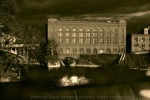
In the 1859, Carrington event, the GICs surged through the world’s emerging global communication system,known as the telegraph. So much power was generated from the solar storm entering the Earth’s atmosphere, it sent massive currents through telegraph wires, catching offices on fire, nearly electrocuting operators and mysteriously continued sending signals with batteries completely disconnected.
A visual indication of the Earth’s magnetic field being overwhelmed occurs when the aurora borealis appears. If the cosmic-light-show can be seen near the tropics, it’s an indicator our planet’s magnetic fields are severely being overrun. In the extreme solar storm of 1859, the aurora borealis was seen near the equator and it was reported people were able to read newspapers outdoors at midnight. Navigational compasses (19th century version of GPS) throughout the world spun-out-of-control due to the flux of electromagnetic energy.
Chronicles of the largest solar and geomagnetic storms in the last 500 years.
1847 — First geomagnetic storm caused by solar flare inadvertently documented with telegraph technology. Reports were the telegraph system was sending clearer signals by disconnecting its batteries and using the geomagnetic energy from the storm. First published affects caused from geomagnetic storm.
1859 — Becomes known as the “Carrington Event;” telegraph system becomes inoperable worldwide as reports of offices are set on fire from supercharged telegraph wire. This is the largest geomagnetic storm in 500 years. Scientist impressed with the event begin documenting future solar storm activity. The destructive power from a storm of this magnitude would devastate global power grids, satellites, computer and communication systems.
1921 — Know as the “Great Storm,” it impacted worldwide telegraph and radio signals with total blackouts and cables were burned beyond use. This scale of geomagnetic storm is likely to occur approximately once every 100 years. As we approach a century mark since this type of storm took place — it’s possible another one could happen at anytime, with devastating results unless preventative measures are taken.
1989 — Major solar flare erupts on surface of the Sun opposite of Earth; a resulting solar storm trigers a massive geomagnetic storm, which overwhelms Quebec’s power grid. As a result of the storm, six million people instantly loses power as U.S. Northeast and Midwest connecting grids come within seconds of collapse. As a result, Canadian government becomes proactive and takes effort to protect its power grid from future solar storms.
2003 — Know as the “Halloween Storms” this series of geomagnetic storms disrupted GPS, blocked High Frequency (HF) radio and triggered emergency procedures a various nuclear power plants. In Scandinavia and South Africa, section of power grids were hit hard, many large power transformers were destroyed by the powerful geomagnetic induced currents (GICs).
Chronological Reports and News Accounts of Solar Storms From 1859 to 2003
This is one of the most comprehensive list of solar storm accounts on the web. The site chronicles strange solar storm happenings; such as reports in the early 1960s with TV programs suddenly disappearing and reappearing in other regions. Other unsettling reports include the U.S. being cutoff from radio communication from the rest of the world during a geomagnetic storm. Please see link below:
http://www.solarstorms.org/SRefStorms.html
Solar Storm Acronyms and Terms
ACE — Advance Compositional Explore = NASA satellite used in detecting and monitoring potential damaging solar flares and CMEs.
AC — alternating current
BPS — bulk power system
CME — coronal mass ejection = caused from a solar fare near the surface of the sun, which sends a billion-ton radiation storm out into space.
EHV — extra high voltage
FERC — United States Federal Energy Regulatory Commission
GIC — geo-magnetic induced current = an extreme solar storm’s magnetic energy counteracts with our planet’s protective magnet field, creating electric current which conducts or travels through the ground or ocean water.
GMD — geo-magnetic disturbance
GAO — Government Accounting Office
GPS — global positioning system = A series of satellites positioned in an Earth, geostationary orbit for use in military and civilian navigation
NERC — North American Electric Reliability Corporation
NASA — National Aeronautics and Space Administration
NOAA — National Oceanic and Atmospheric Adminestration
POES — Polar Operational Environmental Satellite
SEP — solar energetic particle
SOHO — Solar and Heliospheric Observatory (satellite)
STDC — Solar Terrestrial Dispatch Center (Canada)
STEREO — Solar Terrestrial Relations Observatory (Satellite)
Sources and Links
.
http://www.n3kl.org/sun/status.html
Washington Post story on conflicting NASA and NOAA solar forecast warnings for the July 12, 2012 solar storm event.
http://www.washingtonpost.com/blogs/capital-weather-gang/post/solar-storm-incoming-federal-agencies-provide-inconsistent-confusing-information/2012/07/13/gJQAkm06hW_blog.html
NASA and NOAA sites (post warning of impending dangers to the electrical grid from solar storms producing extreme geomagnetic induce currents (GICs) on Earth). http://science.nasa.gov/science-news/science-at-nasa/2009/21jan_severespaceweather/ http://science.nasa.gov/science-news/science-at-nasa/2010/26oct_solarshield/ http://www.noaawatch.gov/themes/space.php
http://www.guardian.co.uk/science/2012/mar/18/solar-storm-flare-disruption-technology
http://www.wired.com/wiredscience/2012/07/solar-flare-cme-aurora/
http://www.usfa.fema.gov/fireservice/subjects/emr-isac/infograms/ig2012/4-12.shtm#3
My solar storm articles from February www.bigpictureone.wordpress.com and in the March addition of www.ScienceTechTablet.wordpress.com present a comprehensive picture of how solar flares and solar storms originate, with the potential of producing geomagnetic storms on Earth. If these geomagnetic storms are severe enough, they can threaten our way of life. Some strategies and common sense precautions are offered for civic preparedness in the case of an extreme solar event.

